"In brodo di giuggiole": four emerging artists in Milan explore dialogue between cultures
From October 4 to 31, 2024, the Milan headquarters of the renowned Parisian auction house Artcurial becomes the scene of the exhibition In brodo di giuggiole, curated by Luca Zuccala. The protagonists are four young international artists Najsa Dishnica (Albania), Jingge Dong (China), Arvin Golrokh (Iran) and Eric Pasino (Italy), who confront each other through their works in an aesthetic and cultural dialogue. The exhibition focuses on the symbolism of jujube, an ancient fruit loaded with meanings that, over time, has been associated with distant worlds, dreams, myths, but also with everyday and personal aspects. The exhibition stems precisely from the desire to explore, through contemporary art, how these artists from different cultural backgrounds deal with universal themes such as identity, memory, history and the perception of reality. In brodo di giuggiole thus becomes an opportunity to reflect on how cultural differences can be enriching, not only for the artists themselves, but also for the audience viewing their works.
The title of the exhibition, In jujube broth, is rooted in the symbolism of the jujube fruit, a very ancient food native to the Middle East, which evokes both legendary and mystical aspects and more humble, everyday practices such as the preparation of jams, brandies and sweets. Over time, the jujube has taken on various symbolic meanings, representing, on the one hand, knowledge and wisdom-asin Iraq, where the fruit is associated with the tree of knowledge-and, on the other hand, extreme happiness, expressed in the famous saying “going into jujube soup.”
Jujube, like the path of the artists in the exhibition, is an element that travels through different cultures, times and spaces, but manages to maintain a stratification of meanings that is also reflected in the works on display. The four artists share a quest for a language that, like the fruit, may seem small and unassuming, but holds deep symbolic meaning, capable of expressing complex themes such as intercultural dialogue, belonging and self-discovery.
In brodo di giuggiole stages, as anticipated, the work of four emerging artists, each with their own identity and expressive language. Despite their cultural and artistic differences, the works of Najsa Dishnica, Jingge Dong, Arvin Golrokh, and Eric Pasino engage in dialogue with each other, interweaving themes such as memory, cultural identity, and tensions between figuration and abstraction. Although these artists come from very different backgrounds, they manage to create a bond that transcends geographic and temporal distances, offering a universal and collective vision of human experiences.
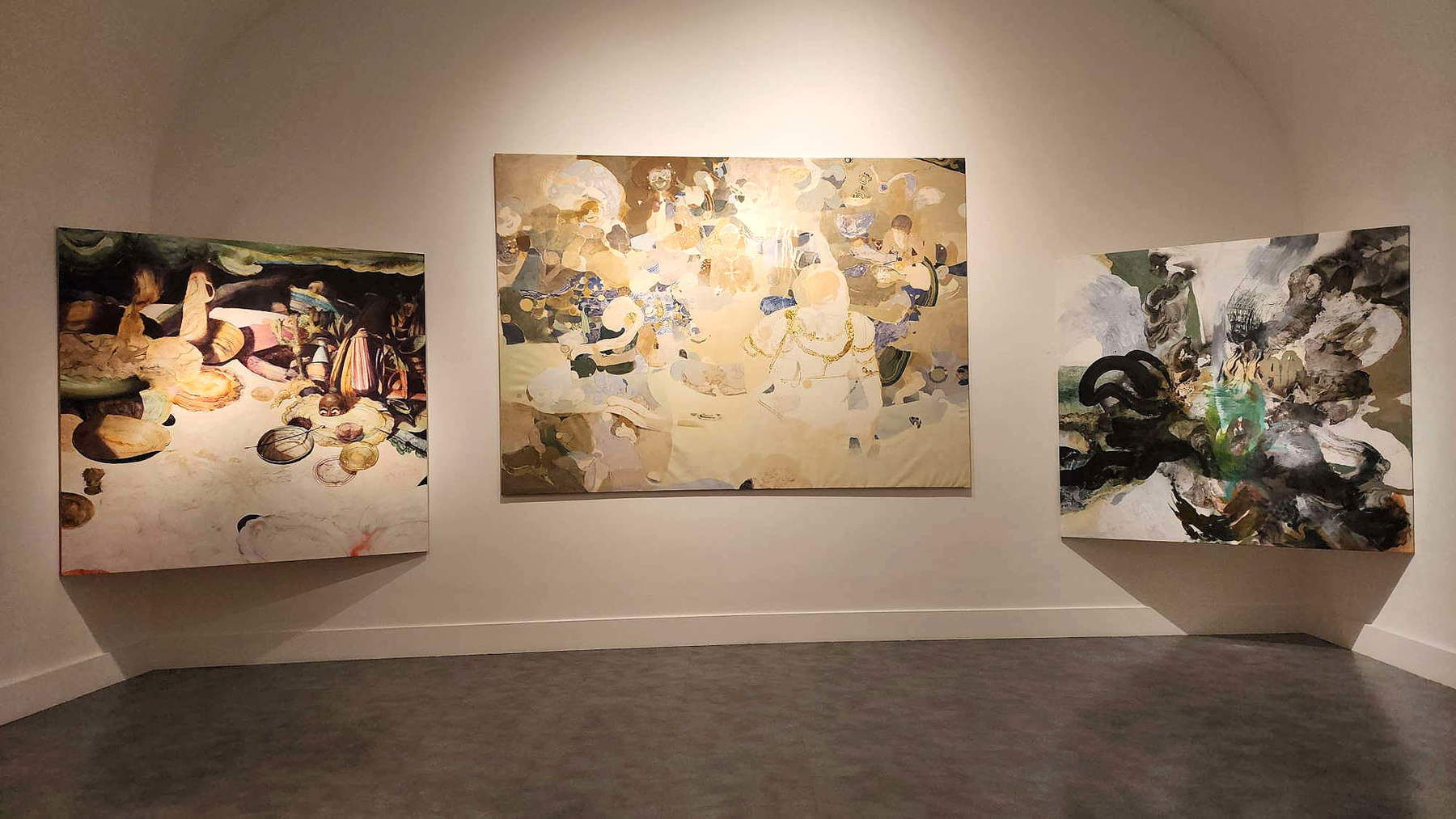
The artists in the exhibition
The ten works on display in the exhibition range between figuration and abstraction, between dreamlike visions and more real representations. Najsa Dishnica brings to canvas the tension between the natural world and its deconstruction, while Jingge Dong explores the conflict and fusion between the ancient and the modern, the East and the West. Arvin Golrokh, with his dark and reflective atmospheres, invites the audience to question human power and vulnerability, while Eric Pasino dwells on the delicate balance between the visible and invisible, between what we can grasp and what eludes us.
Najsa Dishnica (Durres, 1998), lives and works between Milan and Venice. Her painting practice is characterized by strong gestures, through which she explores the relationship between form, tension and noise. Her works deform the landscape, breaking it down to seek meanings that go beyond simple visual representation. Dishnica is an artist who moves in search of a language capable of conveying the invisible, digging beneath the surface of reality to reveal an inner landscape made of hidden emotions and symbols. Over the years, she has participated in important group and solo exhibitions in Albania and Italy, gaining recognition and participating in art residencies.
In her paintings, nature is always a source of inspiration, able to act on memories and memory. His interest is focused on the representation of movement, which involves the image of the landscape as a tool to be deformed, decomposed, until it loses its recognizable form, a freer and richer tool of meaning, to bring the unconscious to consciousness, giving image to memory and imagination that deprived of a pre-existing form, become real, visible, touched by painting. In his works, lines, textures, balls, drippings create a visual play that aspires to guide and rest the eye within a composition where it is easy to get lost in each tension that gesture, color and drive create. Through her choice of materials and techniques, Dishnica exploits the duality between the recognizable and the unrecognizable to create a visual experience of symbols, fragments, familiar and unfamiliar elements to invite the viewer to actively participate in the process of interpretation.
Jingge Dong (Beijing, 1989) represents the bridge between Eastern and Western cultures. He currently lives in Venice, where he earned a master’s degree from the Academy of Fine Arts. Her works combine traditional Chinese symbols with Western artistic techniques, creating a pictorial language that reflects the complexity of her cultural identity. Jingge Dong’s art investigates the dynamics between past and present, East and West, challenging traditional boundaries and inviting audiences to reflect on their own sense of belonging in a globalized world. His works, exhibited internationally, are included in important collections, including the Fondazione Bevilacqua La Masa in Venice and the Ca’ Pesaro Museum.
Dong starts from personal experiences of exploring one’s identity in a foreign land to ask how people of different origins can coexist within the same nation, each finding their place: his research on this theme began with a study of the Chinese community in Prato (the painting Made in Italy on display at Artcurial is a reflection of this research), and seeks to investigate how economic elements (e.g., the flow of cheap labor) inform social dynamics.
Arvin Golrokh (Tehran, 1992) is an artist who focuses his art practice on the analysis of power and authority. His works oscillate between figuration and abstraction, with dark atmospheres that evoke inner landscapes, laden with historical and mythological references related to Persian tradition. His art reflects on themes such as the fragility of power and the precariousness of human existence, questioning the dominant narratives imposed by authority figures. Golrokh has received major awards, including the Premio Mestre and Premio Nocivelli, and his works are exhibited in public and private collections in Italy and abroad.
Two of Golrokh’s works are in the exhibition. Corpo greve is the study and elaboration of an authority figure taken from the image depicting the death of a well-known personage: the corpse is paraded through the most important streets of the city as if it were a martyr raised on the hands of followers. Anthropological Metamorphosis , on the other hand, is set in a cold city that nevertheless mobilizes against subjugation, wants to self-regulate its own rhythm, space and production. One breathes, in the painting, an air of hope: the workers feel themselves an integral and decisive part of society, the masters of society feel threatened, but indeterminacy and indifference annihilate this lively atmosphere, so that the workers remain isolated, separated, even as they resist while remaining alone, thus demonstrating the possibility of what everyone thinks is impossible.
Eric Pasino (Vercelli, 1997) represents the Italian voice in the exhibition. His painting practice lies between abstraction and figuration, with works that explore the boundary between presence and absence, between the visible and the invisible. After graduating with a bachelor’s degree in Painting from the Albertina Academy of Fine Arts in Turin, Eric continued his artistic career at the Academy of Fine Arts in Venice. His works have been exhibited in numerous group and solo exhibitions in Italy, and he has participated in prestigious competitions, winning the “Premio Mestre di Pittura” in 2022. Pasino is an artist who continues to challenge pictorial conventions, seeking an expressive language that can reflect the complexity of the human condition.
Pasino is featured in the exhibition with the canvas Feste segrete (Secret Feasts ), which opens with a scene suspended between reality and dream, a table set on a top so white that it seems to radiate a very faint light. Organic-looking objects and enigmatic utensils lie abandoned, while a section of blackened skull observes with artificial eyes. The viewer is catapulted into the middle of an already concluded ritual, a ritual whose protagonists are absent and whose meaning is precluded from us: we find ourselves where we are not supposed to be, in front of mysterious remains and symbols that do not belong to us, leaving us with the feeling of an unrevealed secret.
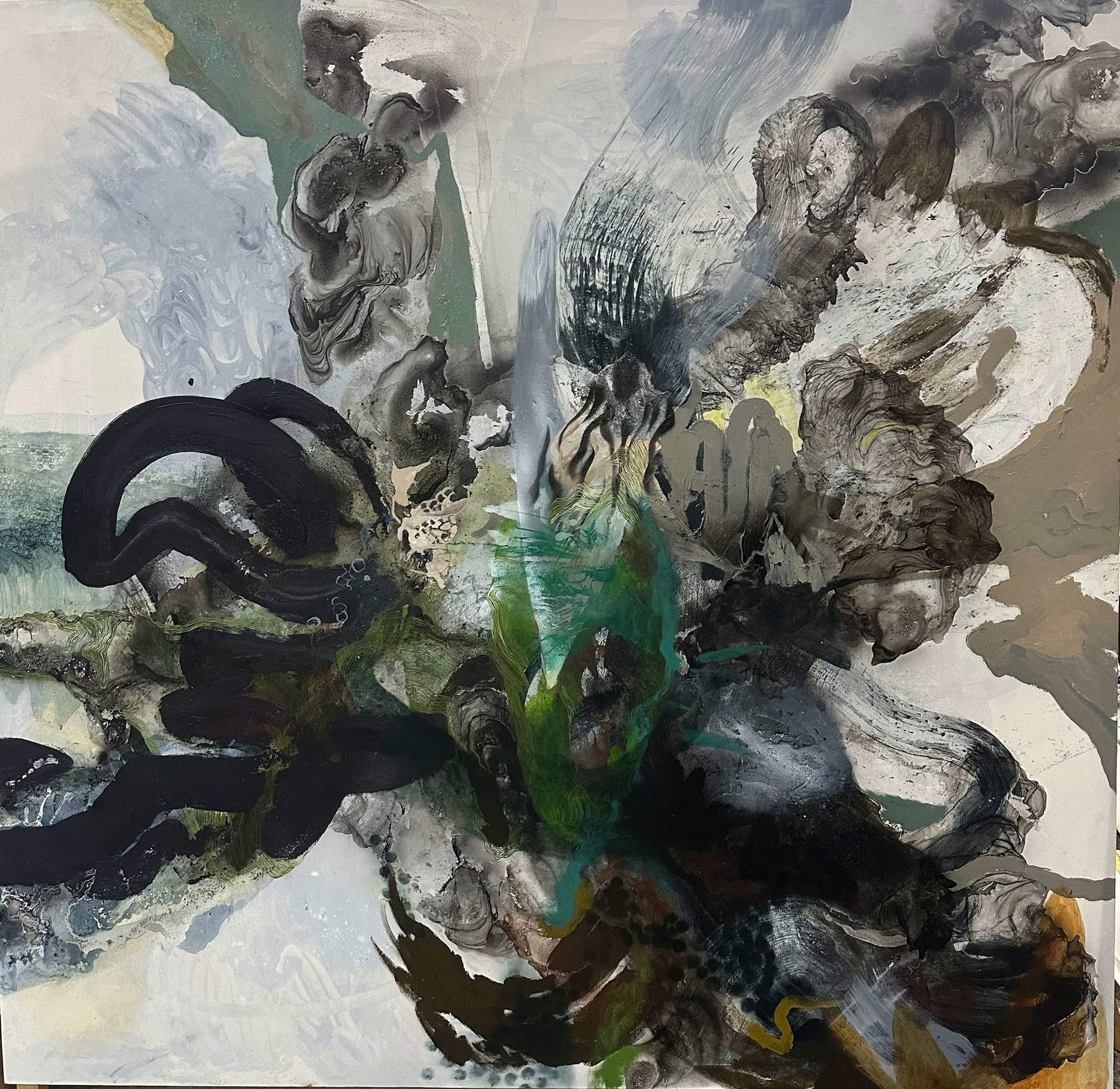
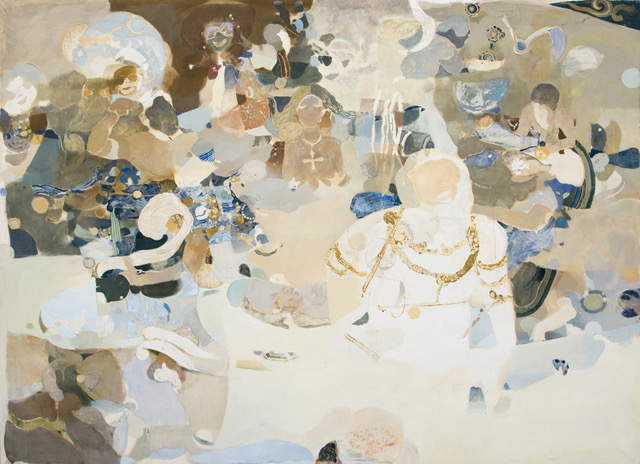
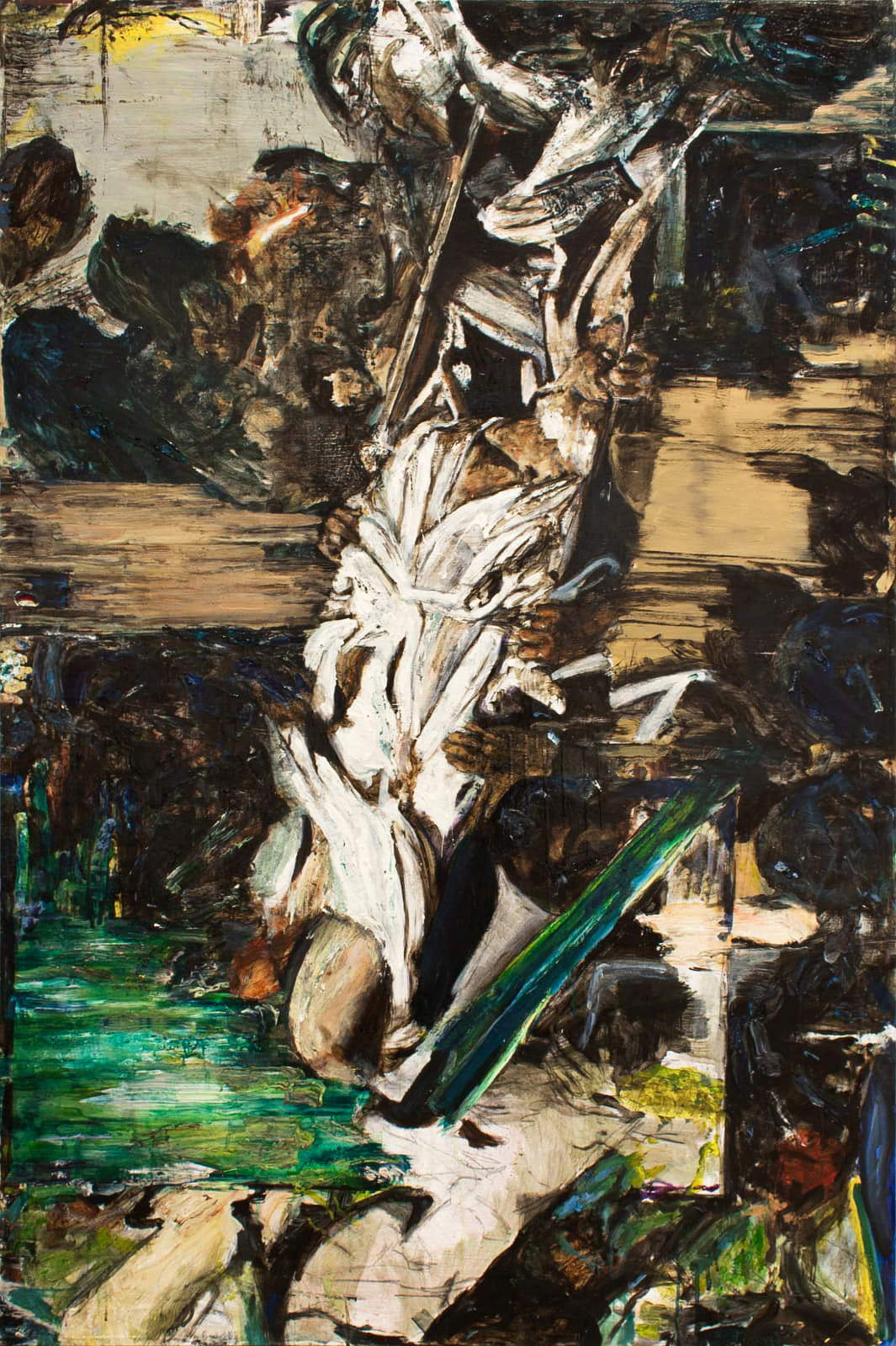
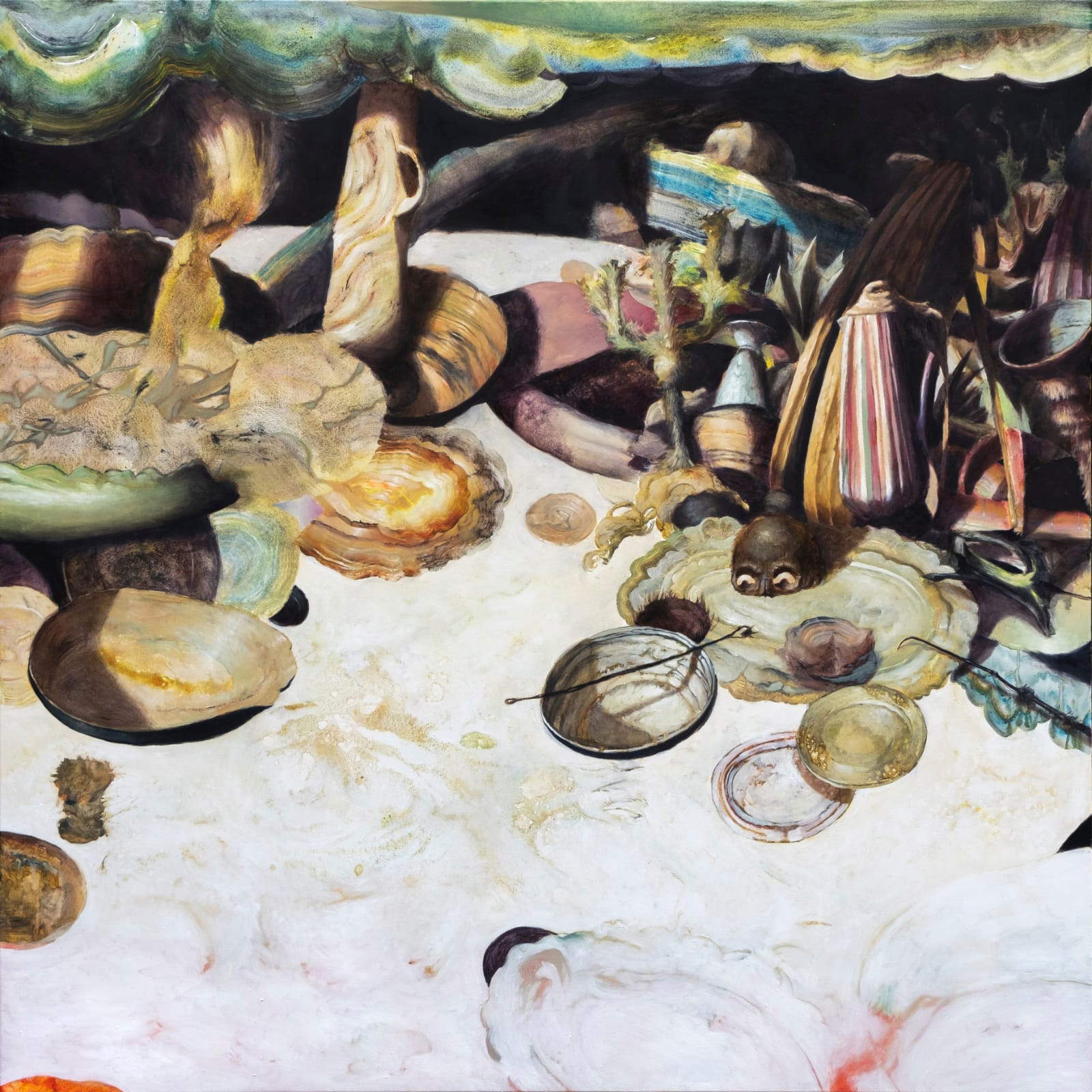
Artcurial’s Milan office
Artcurial’s Milan office, opened in 2012 in a historic building in the heart of Milan, has become a reference point for collectors and art lovers. In addition to being one of the leading auction houses for Italian design, Artcurial has been able to establish itself as a promoter of young emerging talent, both Italian and international. One of the missions of the Milan office is precisely to support and enhance artists under 35, offering them a platform for visibility capable of bringing together different cultures and artistic languages.
Artcurial regularly organizes exhibitions and events that highlight new trends in contemporary art, promoting a dialogue between different cultures and disciplines. The choice to host In brodo di giuggiole therefore wants to place itself in line with this philosophy, creating an opportunity for artists from different cultural backgrounds, but united by a deep desire to explore universal themes such as identity, memory and the perception of reality.
 |
| "In brodo di giuggiole": four emerging artists in Milan explore dialogue between cultures |
Warning: the translation into English of the original Italian article was created using automatic tools. We undertake to review all articles, but we do not guarantee the total absence of inaccuracies in the translation due to the program. You can find the original by clicking on the ITA button. If you find any mistake,please contact us.




























